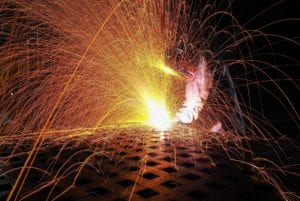How does MIG welding work? MIG welding uses an electrical arc to short the circuit between a continuously fed anode and a cathode. The heat from this process will melt metals, allowing them to mesh together. MIG welding is popular because it can weld a variety of metal types and create a firm weld as well. To understand the process better, below is a look at what goes into the MIG welding process.
How the Welder Works
The welder in a MIG welding setup will include both the wires and the rollers that are used to push the wire out of the gun for use. If you look inside the welder, you will find that the wire spool is held in place by a nut, which should be firmly in place to reduce the risk of becoming loose, but not so taught it is difficult for the wire to move.

How the Gas Tank Works
When you use a shielding gas for your weld, you will find the gas tank on the welder. The gas is used to shield the weld during the melting process. If you don’t use gas, then the welds have a lackluster appearance and retain a brownish color. Your gas will likely include a combination of Argon and CO2, and it should be at a reading of 0 to 2500 PSI in the tank to work properly. When in use, the wire will pass through the rollers in the welder and through a set of hoses, before leading out to the welding gun. These hoses will also carry the gas from the tank.
How the Welding Gun Works
The gun is part of the process where things get done and your main focus when creating a weld. The trigger will control the feed of the wire as well as the electricity flow. The tip of the gun will be covered by ceramic to direct the gas out.
Contact us today to learn more about the MIG welding process or have a job that requires MIG welding,
